Bornholm is a real curiosity of the Baltic Sea, with mysterious round church, warm microclimate and stunning beaches.
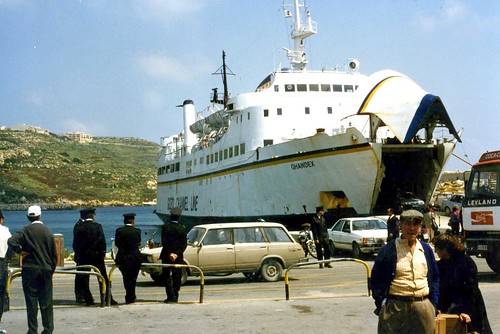
Photography by sludgegulper
A few years ago it was said that if everyone in the world will stand shoulder to shoulder, cover an area equal to the island of Bornholm. Today, population growth, some should ankles wet in the waters off the coast, or borrow the neighbor island Christiansen. Still, its inhabitants are still repeating the same curious about this place lost in the heart of the Baltic Sea.
With an area of nearly 600 km2 and a privileged location in southern Sweden and northern Poland, Bornholm is a destination for more than half a million tourists each year. This unique Danish island with white sandy beaches, cliffs and lush vegetation, save memories of the Neolithic era, medieval ruins, reminders of the Nazi occupation and traces of a bombing by Soviet forces.
It is the oldest visible rock the world, the product of volcanic activity more than 1700 million years. Its people are attentive and relaxed character has that typical of those who live far from big cities. Have their own unofficial flag a dialect of little use because young people today believe that it is not nice talk. On the streets you hear the vast majority Danish and English handles are only some of the natives over those who do not want to give the bornholmsk, its particular jargon.
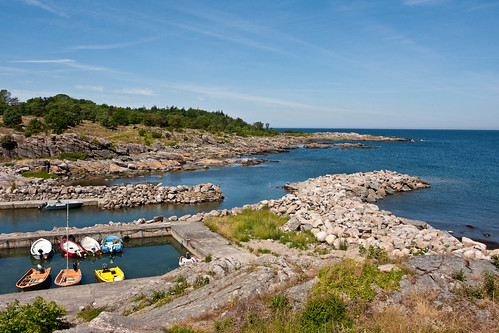
Photography by Popular-Culture
The climate of this area is ideal when compared with that of Sweden and Denmark. Although it is commonly thought that this part of the planet lives extended periods of snow and darkness, Bornholm has its own microclimate, with long warm sunny days. Surrounded by ocean, from April to September is when we most enjoy the summer weather, but if you have to choose a month, the best to visit is undoubtedly July.
Sunny days:
Argentina for a look, this destination would be the equivalent of what it means for a visit Buenos Aires Perito Moreno glacier, a resort with nature, unique, offering different landscapes, which prides itself, and for that should be saved for few months.
The beaches border much of the island and unlike the rest of the European coastline, which includes walking to the sea over rocks for a while and then balancing on its shores, Bornholm has dreamed beaches: white sand, warm water that comes at 24 degrees in summer, plus a very green environment.
South of the island, Dueodde is famous for having the most beautiful arenas. To reach them, a wooden walkway along 500 meters of road between forest and dunes, leads us to the sea. At its entrance is a lighthouse open for everyone who wanted to go in search of a privileged view of the south of the island.
Local products:
If we are on this site at noon, before visiting the lighthouse or cross the road to the sea, it is advisable to stop at a typical local bar to sample the local specialty: smoked herring and salmon. Mustard is another typical product of here, to keep in mind when dressing. And when it’s dessert, or at any time of day, not miss the sweet and juicy strawberries Danish.
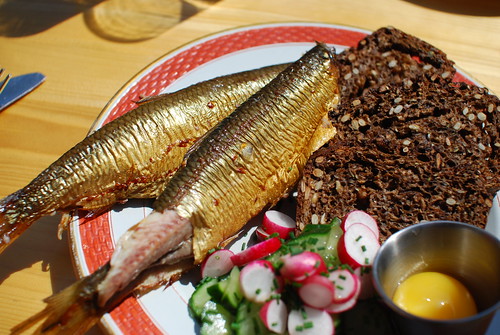
Photography by angermann
When the sun goes down, ride like the boys are the candy factory. Svaneke Bolch, in the city of Svaneke or Karamel Kompagniet in Gudhjem, has a variety of the most sophisticated. Factory and business share the same space while watching the preparation of these sweets can also be purchased candy chili, flavored with various types of flowers, mocha, peanut milk, sugar, cream and Danish flavor characteristic of licorice.
Round churches are the icon of this particular destination. Four medieval buildings scattered throughout the territory is the most sought after tourist spot. Østerlars is famous for its great size and age, is said to be the first to be built, circa 1150. Olsker, 26 meters is the tallest. Nylars is the best preserved and, finally, Nyker, the smallest church.

Photography by Szymon Nitka
Several puzzles revolve around these temples. Historians hypothesize that these structures were designed not only to religious practices, but had a defensive function by successive suffered pirate attacks this area for years.
Since the paths surrounded by endless fields of wheat can be distinguished, with its white walls and dark roofs, wrapped in a peace that does not bother even with the visitors.
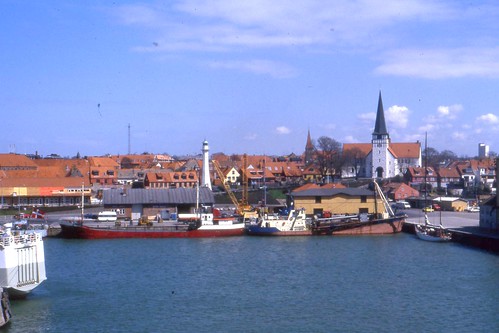
Photography by sludgegulper
Three times, one place:
The island’s main industries are tourism, fishing and agriculture. The colors of their crops dominate the fields, and are not plots of land without work. Although the tourists who provide a major revenue, this area is not full of resorts and large hotel chains as it would if it were a U.S. territory. On the contrary, this harmony is maintained with the natural and unspoiled, where the hand of man interfere, but as little as possible.
North of the island, Hammerhus is the center of its medieval history. The XII century building served as the residence of the Archbishop of Lund, and ended up being the subject of dispute between various rulers during the 500 years after its construction. In 1746 the castle was abandoned and remained open for residents of Bornholm were free to take materials from the area until 1822.
Today, the ruins of this fort are the largest in Northern Europe, located in an exceptional balcony, ideal for sitting without measure time in almost respectful silence, and enjoy a scene of sea, mountains and solitude.
The camel and the lion:
From this point there are two ways to access the sea. Even here, surrounded by cliffs and rocks, there is no room for beaches, we expect a different show. We take the path down the slope, between shepherd and sheep, or choose the path that goes down a ladder to reach the known stones and Løvehovederne Kamelhovederne, shaped camel and lion, respectively.
Like all famous stone that refers to forms known, the association is debatable. The camel, with care, can be recognized from the side and looking towards the Hammerhus. To distinguish the lion takes a little more imagination or take a boat which travels along the coast. As they say, is best seen offshore that profile. We will have to make the walk to see if the lion is really there or stay to contemplate the nature that surrounds this site, which also worthwhile.
Certain archaeological excavations indicate that this region was inhabited several centuries BC Along the roads we take, if we pay attention, you can see rocks carved with symbols in red ink and various geometric elements. Archaeologists have not yet managed to discover the meaning of these prints, but it is suspected that many belong to the Bronze Age, from 1800 to 500 BC
Like Denmark, Bornholm was occupied by German forces during World War II. In the town of Rønne, north of the island, others a little more current traces are left by their Nazi past as a military base. There you can see the remains of forts that were never used.

Photography by Szymon Nitka
Getting There:
Aircraft: Bornholm has its own airport 5 minutes drive from Rønne. Wingsof Bornholm, Sterling and Norwegian Cimber Airlines offer several flights a week to the island.
Boat: From Sweden takes 2 hours, Denmark, 6 hours, Poland, 5 to 6 hours, or Germany, 3 hours.
Bus: from Copenhagen, through the Swedish city of Ystad. This option must be combined with the ferry.
Rail: DBS, Danish railway company, he traveled connecting Copenhagen and Ystad bound to Bornholm. The total length is 3 hours and offers up to five departures per day.
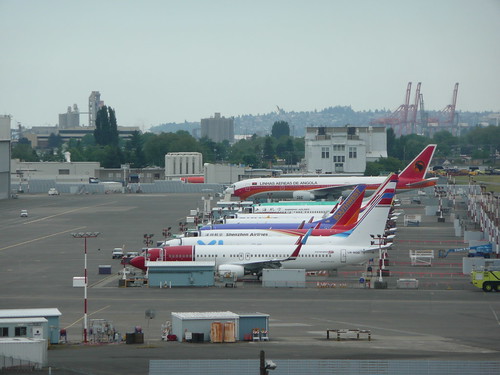
Photography by bsterling
Where to stay?
The cottages are the most popular choice when it comes to lodging. Reservations are made one year in advance, especially between June and September. Other options include apartments, hotels, B & Bs and campgrounds.
Information: Within walking distance of the port is the tourist information office, where most of the maps and brochures are free to chart the course.
Enjoy your trip to Bornholm!
Leave a Reply
You must be logged in to post a comment.
Recent Comments